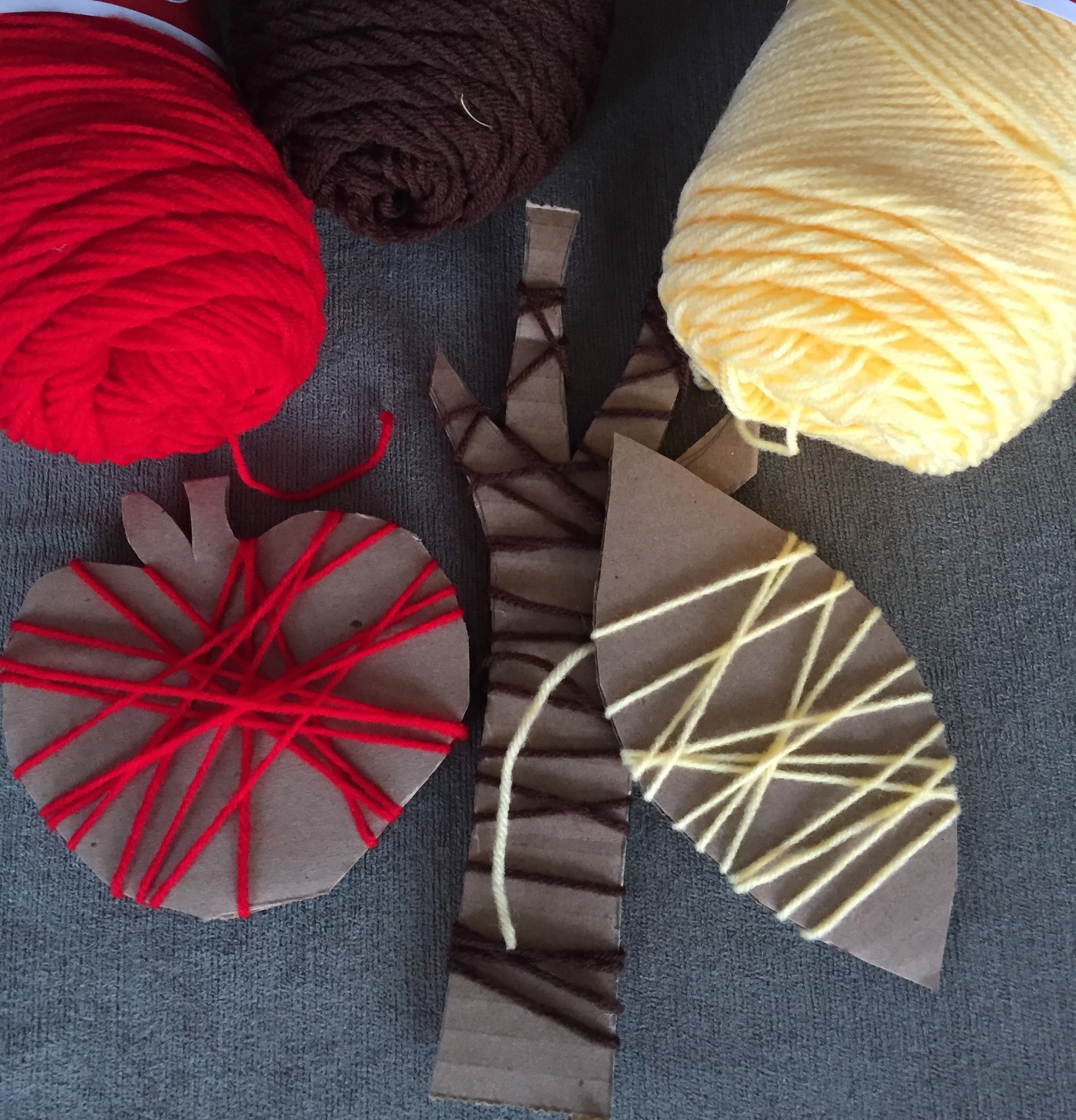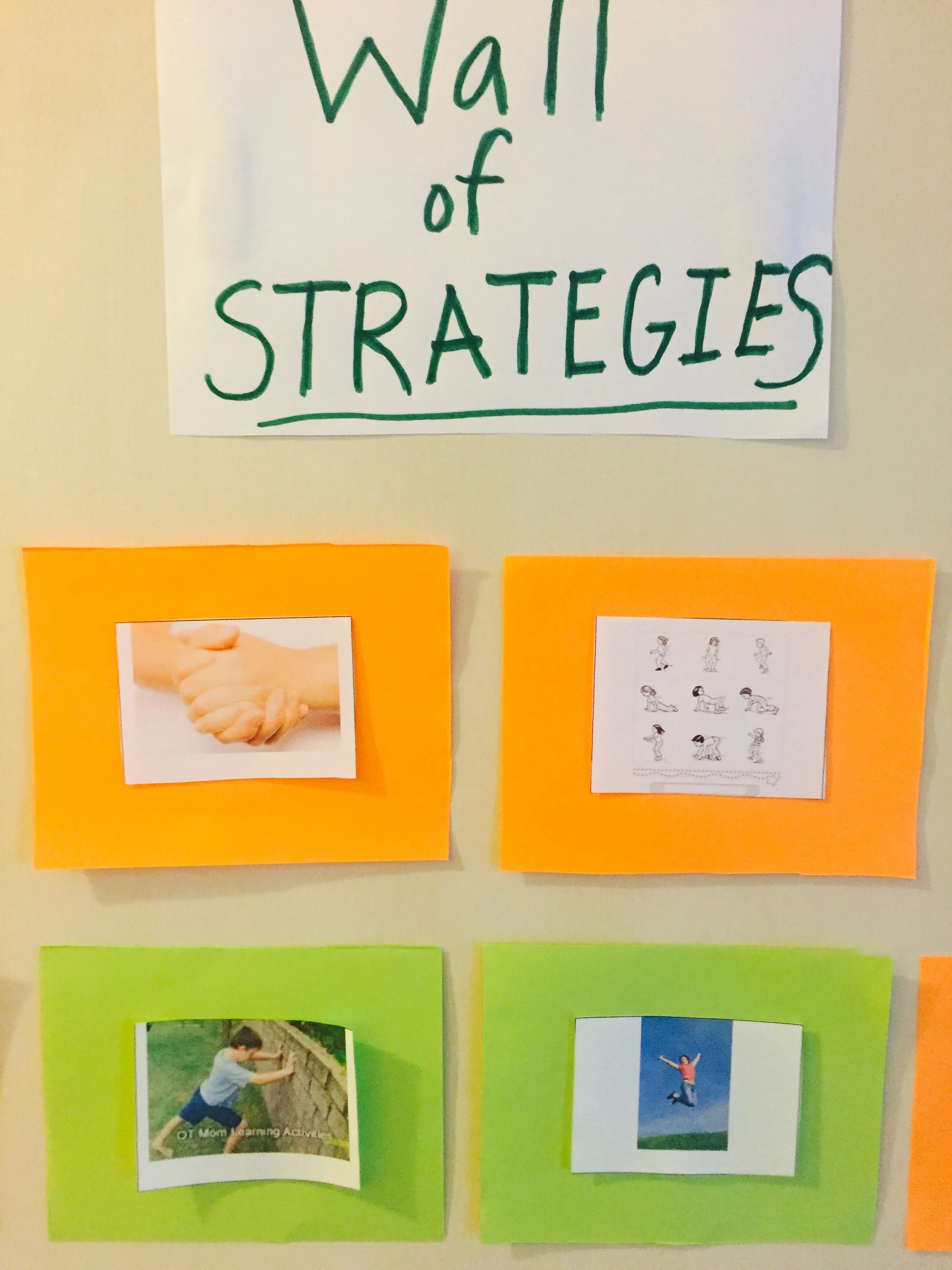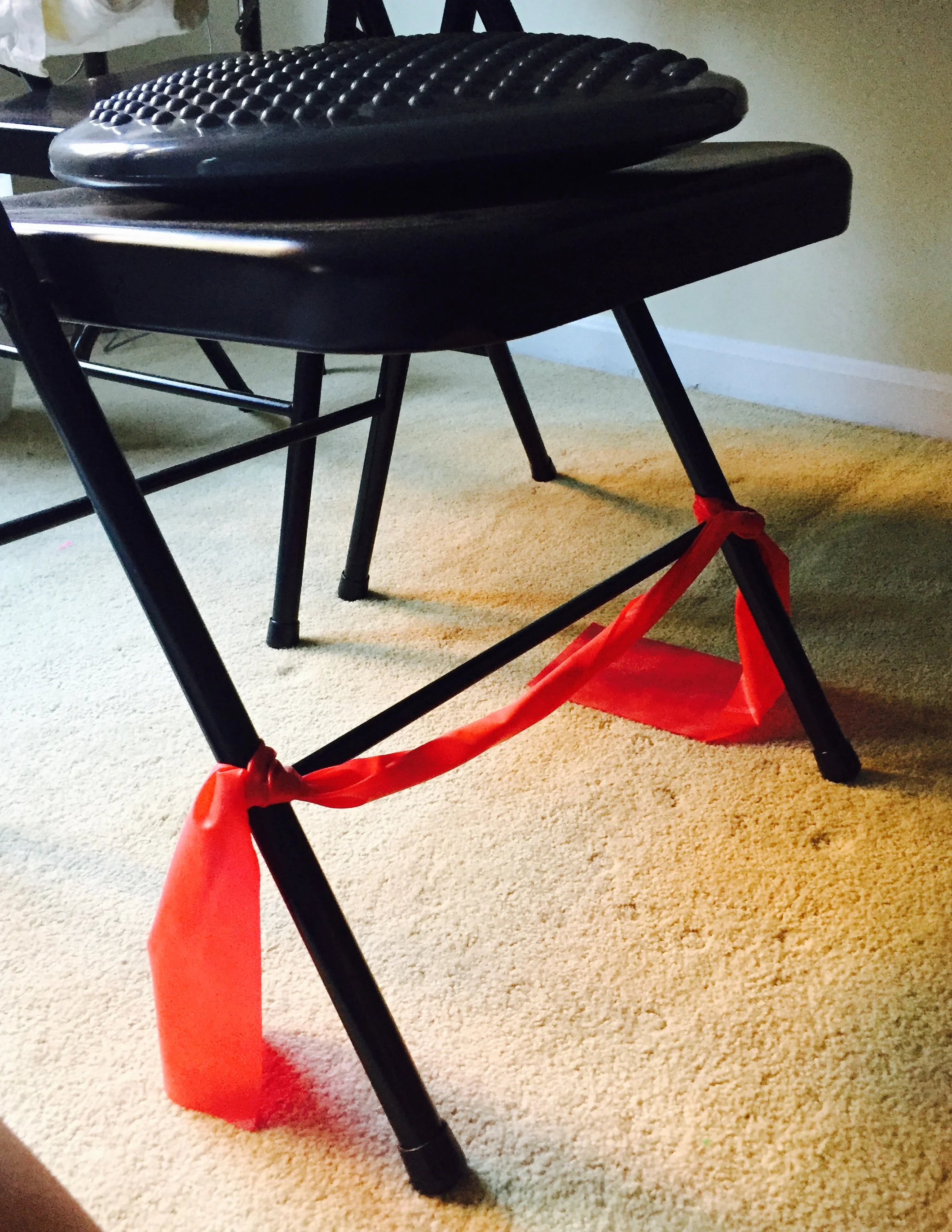OT Activity of the Day:
A wall of strategies
Target Age Range: 2 and up
So after all the questions about seated attention, the next biggest concern from parents, as their children start back at school, is how to calm them down at the end of the day. Many children, and certainly those needing more input than others, will come home and appear to be very excitable. These children are also more prone to meltdowns at the end of the day.
While I usually say talk to the teacher about strategies that your child can employ during the day, I also suggest creating a "wall of strategies" at home. Pictured is a portion of my wall of strategies that I have made out of googled images, construction paper, tape and markers. I have included movements like time in the big pillows, animal walks, jumping (in general or on a trampoline), wall push ups, squeezing hands, getting a drink of water, running around the house, yoga poses, and play with a large therapy ball just to name a few. The type of strategies you use will depend on the type of input your child craves. (An OT can help provide strategies that will be beneficial to your child's sensory needs.)
I use this wall often and if I notice a child needs a break or just needs to move their body I usually suggest a trip to the "wall". This will give your child the movement, or input, they are looking for and the pictures help with selecting a strategy. I would suggest taking a trip to the "wall" as soon as your child comes home and have them pick 2-3 strategies (completed over 20-25 minutes, or more or less depending on your child) before settling into the afternoon routine. With this added movement you should see positive changes in your child's demeanor at the end of the day.
Enjoy!




















